
The Complete Legal Guide For Running Sweepstakes, Contests, & More
Understanding the Essentials of Promotional Laws & Guidelines
Digital promotions are a go-to strategy for marketers seeking to engage audiences, collect valuable data, and drive a wide range of marketing goals. Yet, navigating the legal landscape is crucial to ensure your sweepstakes, contests, and other digital promotions don't land your company in hot water.
This guide will provide you with an overview of the key promotional laws and legal guidelines you need to know before clicking the 'launch' button on your next campaign.










What Are Digital Promotions and How Are They Used In Promotional Marketing?
Promotional marketing is a strategic approach designed to increase visibility, stimulate interest, and drive engagement for a brand, product, or service. It encompasses a variety of promotions such as sweepstakes, contests, giveaways, and instant-win games, all crafted to encourage consumer participation and elevate the brand experience.
Marketing promotions like sweepstakes and contests are great tools for generating new leads, boosting sales, and increasing customer engagement, but they must be done correctly.
These promotions require careful attention to legal details to ensure compliance and avoid any mismanagement or legal violations, which can lead to severe consequences. As regulations change and new digital formats arise, marketers need to stay updated on legal guidelines to prevent any issues.
Who Is In Charge Of Laws and Regulations for Promotions?
Generally, the Federal Trade Commission (FTC) is the primary federal agency responsible for regulating sales promotions and advertising under the Federal Trade Commission Act, 15 U.S.C. § 41. This means they're in charge of investigating suspected violations and bringing lawsuits against companies for illegal activity. However, the US Postal Service (USPS) and the Federal Communications Commission (FCC) also have authority over certain laws regarding promotions.
In addition, most states have similar laws that closely resemble the FTC Act, and gambling, lottery, and promotion laws that govern the conduct of contests and sweepstakes. We’ll go into more depth on regulatory agencies and key regulations later on.
What Separates A Lottery From A Sweepstakes?
The best place to start building your understanding of promotional law is knowing exactly what separates a game of chance from a lottery. Marketers should seek expert guidance to ensure that their promotion does not constitute an illegal lottery. Lotteries are regulated by state jurisdictions and comprise three essential elements: Chance + Consideration + Prize.
Chance is also sometimes called ‘random chance’, meaning that winners are selected completely at random. Every entrant has the same chance of being a winner as other entrants, and there are no special features or advantages that make them more likely to be a winner over others.
Consideration is defined as anything that requires a participant to expend either A) a monetary amount or B) a significant amount of effort or skill, in order to enter/participate in the promotion. Here are some examples for both situations:
A) Purchase required for entry
- Proof of purchase requirement - these can include having to buy a product to receive an entry code printed on the packaging or submit an image of a receipt with a specific purchase item to gain an entry
- UGC promotion requiring specific product(s) in the picture entry
B) Entry method requires a great amount of time/effort
- Proof of purchase requirement - these can include having to buy a product to receive an entry code printed on the packaging or submit an image of a receipt with a specific purchase item to gain an entry
The easiest of the three elements to understand, the prize is the reward offered for participating in the promotion. Promotional prizes can be offered at any amount and in any format such as physical or digital items, gift cards, cash prizes, event tickets, vacation or travel, brand merchandise or products, etc.
How to Avoid Creating a Lottery
These three elements together - Chance + Consideration + Prize - are what make a lottery. Removing one of the three is what results in a digital promotion such as a sweepstakes or contest.
Chance + Prize
For example, a Sweepstakes would be just Chance + Prize. There's no Consideration element because the winner or winners are not being chosen based on specific criteria - they are randomly drawn from a pool of entries. There are mechanisms in which a sweepstakes can encourage purchase by offering entrants an alternate method of entry.
Prize + Consideration
A Photo Contest on the other hand would be the combination of Consideration + Prize. There's no random Chance element since the winner is being judged and selected based on skill.
Types & Definitions Of Different Digital Promotions
Understanding what separates a lottery from a digital promotion is key to being compliant. Understanding how different types of promotions are classified and defined can help make navigating the ins and outs of promotional law even easier for you.
Often, terms like "sweepstakes," "contest," and even "lottery" are used interchangeably when referring to digital promotions. However, different types of promotions can vary significantly in format and execution and thus may be subject to distinct legal guidelines.
By understanding the different types of promotions and their characteristics, brands can strategically plan and execute effective campaigns that achieve their desired objectives.
To help, here are some basic overviews of the most common types of digital promotions

A sweepstakes is a game of chance where a winner is chosen through a random drawing and awarded a prize. There is no skill requirement, and the odds of winning are solely based on the total number of entries. Typically, individuals can enter sweepstakes by completing a straightforward action such as filling out a form or engaging with a brand's social media channels. Although multiple entry methods can be used in a sweepstakes, each entry holds equal weight. Depending on what an entrant is asked to do to enter, an alternate method of entry may be made available.
Contests, such as photo contests, video contests, or essay contests, are competitions where participants perform a specific task or exhibit a skill to win a prize. Contests usually require some level of skill, creativity, or knowledge (i.e. can’t be guessing the number of jellybeans in a jar) and submissions are judged based on predetermined criteria that is defined in the Official Rules. Contests are great for engaging customers and encouraging user-generated content.


Game or Advergame promotions can include a variety of formats, such as collect-and-wins, bingo boards, scavenger hunts, and more. Games encourage customers to tap into their competitive spirit by participating in different activities and gathering unique pieces to win prizes.
As a result, these promotions are usually highly interactive because they utilize various gamification elements to attract, engage, and entertain consumers of all ages. Additionally, game or advergame promotions can run over an extended period, providing more opportunities for people to play and win.
Instant Wins are a versatile promotion that gives customers the possibility of immediately winning a prize upon entering. They can include elements like scratch-offs or spin-to-win wheels with potentially high chances to win (depending on the prize pool) which boosts the likelihood that customers will re-engage again and again.
Instant wins are very similar to sweepstakes (Chance + Prize) but with one key difference - Instant win games notify winners with a win or lose message upon gameplay/entry rather than at the end of a drawing period which provides immediate gratification. Sometimes, instant wins are layered within a sweepstakes to create multiple ways of winning and add additional excitement. Depending on what an entrant is asked to do to enter, an alternate method of entry may be made available.


A Giveaway (sometimes called a Fire-Drill promotion) is a unique promotion type because it is not based on chance or skill. Instead, they follow a "first-come, first-served" format, where the first X number of participants who complete an action (sign up, purchase, enroll, etc.) within a specified period are awarded the advertised prize.
When the promotion period ends or all prizes are claimed, the promotion is over. Giveaway promotions create a sense of exclusivity and excitement that appeals to audiences and builds anticipation due to their 'limited-time-only' prizes or “gift with purchase” while supplies last.
The Framework For Creating A Legal Digital Promotion
The next step for ensuring you're legally compliant is knowing the main requirements and regulations to follow when creating your digital promotion.
Adhering To State & Federal Sweepstakes Laws
The US Postal Service (USPS) and the Federal Communications Commission (FCC) also have authority over certain laws regarding promotions. Some individual states have laws that govern the conduct of contests and sweepstakes specifically for their state.
The key purpose of any laws and regulations is to protect consumers from deceptive or unfair trading practices. You can ensure your promotion is compliant by being aware of some universal regulations:
"No Purchase Necessary" Requirement
Removal of the purchase consideration element is what typically separates a game of chance from an illegal lottery. Entrants can participate without having to make a purchase or provide any form of payment to the Sponsor.
This is why you invariably see the phrase "NO PURCHASE NECESSARY" present in a promotion's Official Rules, Terms and Conditions, and related marketing materials. It is also important to note that any advertising materials calling out the promotion and chance to win - such as point of purchase displays - must feature an abbreviated set of rules featuring the start/end dates, the total prize ARV, Sponsor name, odds of winning, and link to full Official Rules.
That said, what if you do want to make a purchase requirement one of the entry methods for your promotion? If your sweepstakes promotes a new product launch, you could expand its reach by allowing customers to earn an additional entry by uploading a picture of their receipt with a valid purchase or submitting a unique code printed on the product packaging.
You can make a purchase requirement one of your entry methods for your promotion, just as long as it's not the only entry method for consumers. To do this correctly, your promotion must include what’s called an Alternate Method of Entry or AMOE - an additional free, no-cost way for participants to enter.
Alternate Method Of Entry (AMOE)
Including clear and accessible Alternate Method of Entry (AMOE) options in your promotion ensures that everyone has an equal opportunity to participate, regardless of their willingness or ability to make a purchase.
AMOEs can be either digital or physical formats, such as submitting an online form, sending an email to a specific promotional email address, or mailing in their entry to the Sponsor’s designated PO Box or office address for manual processing.
An Alternate Method of Entry must be available to all participants
The AMOE must be clearly disclosed alongside the other entry methods in the Official Rules, marketing materials, and any T&Cs.
Any entries received via AMOE must receive equal treatment to any entries received via other methods. This means you cannot decide to remove AMOE entries from the entry pool in favor of selecting a winner who made a purchase.
Bonding & Registering For Games of Chance
If you intend to run a game of chance (sweepstakes or game) and your promotion exceeds certain criteria or thresholds, you will need to register the promotion with regulatory authorities in certain US state jurisdictions. A surety bond may also be required based on the total monetary value of the prizes being awarded to financially guarantee that the Sponsor awards the advertised prizes.
Why Is Registering & Bonding Important?
The laws behind Registering & Bonding are meant to protect consumers from fraudulent business practices, such as enticing consumers with prizes but later defaulting in their obligation and failing to award the promised prizes to rightful winners. This is why Registering & Bonding your promotion is a vital step for ensuring your promotion is legally compliant.
You can ensure the process goes smoothly and with zero issues by working alongside an experienced sweepstakes vendor who is knowledgeable about the different legal requirements for administering promotions.
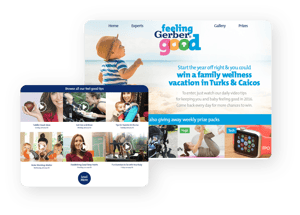
As always, it's important to understand that each state will have its own laws and regulations so you should always seek expert advice before conducting a promotion. In general, the following state requirements apply:
New York: Any company offering a game of chance with a prize pool over $5,000 must register & bond the promotion with the appropriate state regulatory authority. Filings must occur at least 30 days before the promotion start date.
Florida: Any company offering a game of chance with a prize pool over $5,000 must register & bond the promotion with the appropriate state regulatory authority. Filings must occur at least 7 days before the promotion start date.
Rhode Island: Any sweepstakes offered at a retail location with a prize pool valued at over $500 must be registered with the state authority, but no bonding is required.
Arizona: Any contest that involves the purchase of a product for entry must be registered with the state’s Attorney General.
Additional Information to Know About Registering & Bonding A Promotion
Part of registering & bonding a promotion is submitting what’s called a Winners List after the promotion ends. A winners list is the complete list of all confirmed winners who received a prize. The deadline to submit the winners list to the required states is usually 30 days after the promotion ends. However, you can request extensions if it looks like winner confirmation will take longer than 30 days.
Not every type of digital promotion is required to be registered & bonded. For example, a Business-to-Business (B2B) sweepstakes (where entry is limited to specific individuals who meet specific eligibility criteria) is not required. Neither are contests unless a contest has a purchase requirement for a method of entry - then it would need to be bonded in Arizona. Again, be sure to check the specific requirements of the states you plan to host the promotion.
Your Checklist For Creating Official Rules
Your promotion must have a detailed set of Official Rules that are easy for participants to understand and access. These rules must include all the relevant and necessary information about the promotion, from entry requirements to privacy policies. To make things easy, we've put together a checklist of the main elements that form the Official Rules for a digital promotion.
Before Getting Started
We must point out that this is not an exhaustive list of everything that needs to be included in the Official Rules for your promotion to be considered legally compliant. Certain promotion types will have additional criteria for what needs to be included in the rules. For example, photo and video contests will have more detailed entry requirements, content guidelines, and judging criteria that wouldn't be necessary in the rules for an instant win.
In addition, there are legal factors whose inclusion depends entirely on the elements of your promotion design, like your prizing choices or entry mechanisms. For example, if your grand prize is a $5000 trip to Hawaii, a portion of your rules will include terms and conditions covering the winner's travel requirements and trip liability.
No matter the type of promotion, here are the core 12 elements that form the basic foundation of any Official Rules.
1. The Promotion Name
This might be pretty self-explanatory, but it’s worth pointing out that your promotion must run under the same name as in the rules, no matter where it’s promoted - for example, any print materials with short-form rules should have the same name as long-form rules on the promotion website.
2. "No Purchase Necessary"
Every sweepstakes or contest rules should include the statement “No purchase necessary to enter and/or win”, along with “a purchase will not increase your chances of winning”. As a reminder, this ensures each participant has an equal chance to win.
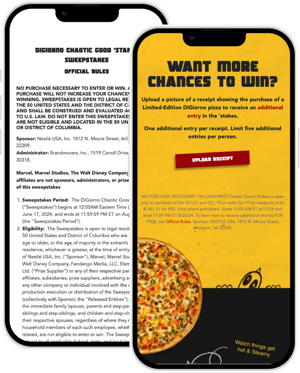
3. The Promotion Sponsor
You must identify who is sponsoring the promotion, aka who is ultimately the face of the promotion. This should also include contact information so interested parties have a way of getting in touch if they have questions or concerns.
Administrator - Administrators are typically agency partners or promotion providers that help execute the promotion on the Sponsor’s behalf. Administrators might be responsible for tasks such as registering & bonding, customer service inquiries, conducting winner admin, prize fulfillment, etc. Not every promotion will have an Administrator but the ones that do should identify who they are along with the Sponsor.

4. Eligibility Requirements
You must disclose who is eligible to enter the promotion and what the requirements are to participate. Common eligibility requirements include:
You should state if your promotion is only open to legal residents of the US and/or the countries if your promotion is international. If your promotion is only running in certain states, you'll want to specify that only legal residents of those states are eligible to enter. While you can execute sweepstakes in many countries, consult an expert with experience in multi-jurisdictional promotions.
You must specify age requirements. Entrants must be the age of majority in their jurisdiction residence. That being said, Sponsors can also allow those over the age of 13 to enter under certain conditions, but you must acquire parental approval in order to comply with COPPA laws.
This requirement applies to promotions involving third-party accounts, like social media platforms. This is included because good standing is usually necessary to participate. For example, a brand running an Instagram-hosted sweepstakes may require entrants to have an “Instagram account in good standing,” meaning users with banned or suspended accounts are ineligible to enter.
5. The Entry Period
When will your promotion begin, and how long is it open to entrants? In the Entry Period section of your rules, you must include the specific dates and times of when the promotion goes live and when it ends.
You must determine what your official start and end dates will be before the promotion begins. Once the promotion is live, you cannot change the official Entry Period easily or on a whim. This is a legal requirement to prevent companies from suddenly ending promotions early or letting them run indefinitely without fulfilling prizes.

6. How To Enter
This section is where you’ll go into detail of how users can enter your promotion. If your program requires an Alternate Methods of Entry (AMOE) then this is where that information will be included.
- Depending on the size and complexity of your promotion your 'How To Enter' section could get pretty long. For example, if you are running a joint sweepstakes and photo contest, you have to explain all the ways consumers can enter for both types of promotions, along with any AMOE requirements.
- As a best practice, more detail is better than less. You want to avoid creating any user confusion or hard-to-follow entry mechanisms, as this could result in your rules being non-compliant..
- You can also use this section to list out how entrants could be disqualified for not following the rules or attempting to commit fraud, such as if they try to enter using multiple fake email addresses or social media accounts.
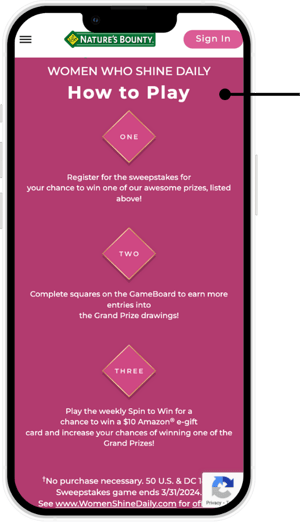
7. How & When Winners Will Be Chosen
Along with telling consumers how they enter the promotion, you also need to tell them how they can win. The exact details of how winners are selected will depend on what kind of promotion you’re running.
For a simple sweepstakes, the process will include randomly selecting the potential winner(s) from all eligible entries around a specific date. For a photo contest, you will need to detail the specific evaluation criteria and scoring process the judges will use to determine the winning photo entry.
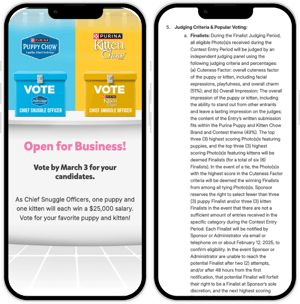
8. Winner Verification Process
This section is where you'll include any winner verification requirements. The most basic method of winner verification is requiring the potential winner to provide a copy of their government-issued ID - primarily to prove they’re compliant with the entry requirements stated at the beginning of the rules such as residency status and age.
Winner verification can be conducted for any prize at the Sponsor’s discretion. Winner verification is especially necessary when the prizing is higher in value or the value is over a certain amount.
For example, any prize over $600 (whether it’s cash or a physical object that retails for $600 or more) is considered taxable and must be reported to the IRS. So the winner receiving that prize will need to complete an affidavit and have it notarized to show they A) understand the terms for accepting the prize and B) provide the Sponsor with the necessary personal information to receive an IRS 1099-MISC for tax purposes.
9. Prizing and Odds of Winning
You should always list in detail the potential prizes available, the total number of prizes available, the Approximate Retail Value (ARV) of each prize, the total ARV of all the prizes combined, and the odds of winning. This is required to ensure transparency and compliance with regulations.
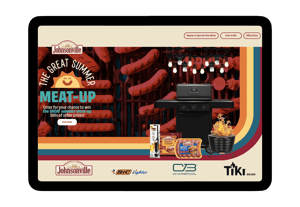
10. Privacy Policies and Data Collection
11. Terms & Conditions, and Limitations of Liability
12. Contact Information & Winners List
You must include instructions for how any interested parties can get a copy of the Official Rules and/or a copy of the Winners List. The usual practice is that the user must submit their request via mail by sending a stamped, self-addressed envelope to the Sponsor's or Administrator's address listed in the Official Rules.
Create Legally Compliant Promotions With Ease
Digital promotions like sweepstakes, contests, instant wins, fire drills, and more effectively boost consumer engagement, generate leads, and increase sales through interactive and often rewarding mechanisms. As more businesses move towards digital promotions, it's crucial to stay updated on evolving laws and regulations. Adhering to promotional laws and regulations will uphold consumer trust and ensure you avoid potential legal pitfalls, safeguarding the promotion’s integrity and your brand’s reputation. By staying compliant, you can effectively tap into the power of promotions while protecting yourself from unnecessary risks.
In summary, understanding the different elements and types of promotions and their legal implications is crucial for successfully executing a promotion. By following applicable laws and regulations and incorporating transparency and fairness into your promotional practices, you can create engaging and effective campaigns that benefit both your brand and consumers. So next time you're brainstorming ideas for a digital promotion, remember to consider these essential factors to ensure success.
Your experienced partner for designing, building, and managing digital promotions
Want to launch legally compliant brand promotions? We can help! Connect with our team today to learn more about our promotional services and expertise.



